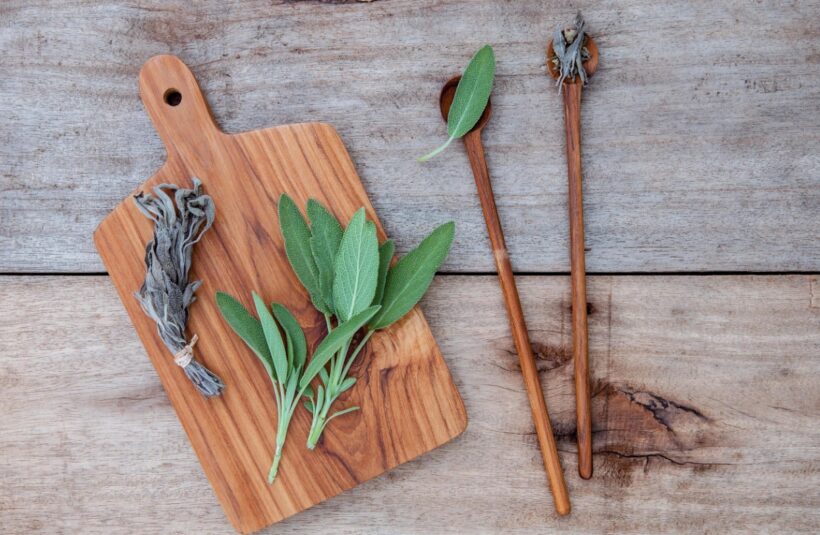What are the differences between fresh and dried sage?
Sage is a precious aromatic herb that is widely used in medicine and cuisines around the world. For culinary purposes, you can find both fresh and dried sage available on the market. However, there are some differences between these two that you should know. Therefore, we will explain everything you need to know about fresh and dried sages, their uses, and their benefits.
What group of plants does sage belong to?
Sage, also known as garden sage and Salvia officinalis, belongs to the mint family, quite similar to basil, rosemary, and thyme. It is an evergreen shrub with oval gray-green leaves. The plant can reach around 60 cm tall, and because of its low-maintenance requirement, the sage is often grown as an ornamental plant.
Where sage comes from?
Sage originated from the Mediterranean region and Southern Europe. In fact, its origin goes back many centuries ago. In ancient Rome, people had used it for warding off evil, healing wounds and snakebites, stimulating fertility in women, and much more.
Then, in the Middle Ages, as the garden sage was considered a precious herb with healing properties, Emperor Charlemagne (who ruled Western Europe at that time) had ordered his people to massively cultivate the plant. The latter would principally be used for trade and medical purposes. From there on out, people around the world have been using this miracle plant.
Apart from healing and cooking, what are the other uses of sage?
Throughout its long history, sage has been used for various purposes from religious rituals to medical treatments. However, there are also other ways to exploit this herbal plant:
- As a seasoning for many worldwide recipes.
- Making teas (brewed from the leaves)
- Adding to cocktails for a more distinct aromatic flavor.
- Producing essential oil.
- Being an important ingredient in many medicines.
- Using it as a natural pesticide.
- Making homemade natural cleaning products
10 health benefits of sage that might surprise you
Sage is not only fragrant but also remarkably good for your health. These gray-greenish leaves are rich in nutrients, as you will see below:
- Contains a high dose of vitamins including vitamin K, with calcium, manganese, and other minerals.
- Due to the large amount of vitamin K in sage, it may support your bone health.
- Rich in Antioxidants – many people believe that drinking 1 cup of sage tea can promote antioxidant defenses.
- Containing antimicrobial properties which neutralize microbes and promote dental plaque growth. It can also soothe throat infections as well as mouth ulcers.
- Ability to reduce menopause symptoms since the herb may contain estrogen-like substances.
- Ability to help reduce the growth of cancer cells.
- Decreasing unhealthy LDL cholesterol while promoting good HDL cholesterol levels.
- Help treat diarrhea by relaxing your guts.
- Lower blood sugar levels and fight against type 2 diabetes.
- Remarkably good for the brain. According to John Gerard’s Herball, he believes that it also helps maintain a good memory, prevent Alzheimer’s syndromes, and promote wisdom.
What recipes work well with fresh sage?
Thanks to its unique aromatic flavor, sage is frequently used for culinary purposes. Its fresh leaves can indeed bring amazing flavors to your food. Moreover, it can pair perfectly with any meat, notably poultry, and some fruits like apples or pears in a savory dish. This is why it has become an essential condiment, especially in European cuisines.
Below, we share with you our favorite recipes with fresh sage leaves:
- “Pasta with gnocchi sauce”, a traditional Italian dish.
- “Squash fritters accompanied with fried sage” – you will be surprised that sage leaves can be delicious when they are fried with butter until crisped.
- “Pumpkin soup with sage and ham”
- “Fried chicken breasts with fresh sage” and other turkey dishes.
- “Scrambled eggs topping with chopped sage”
When buying fresh sages, we suggest that you should choose plumpy ones with vibrant green color. Then, you can store these newly harvested leaves by wrapping them in a damp paper towel and keep them in the refrigerator. With this technique, the sage will stay fresh and still taste bright for several days.
How to cook dried sage?
The difference between dried and fresh sage is that dried sage has more pungent fragrant than its fresh counterpart. Besides, the taste becomes a bit bitter, and the texture changes to an almost unpleasant feeling.
However, the sage spice is the best for seasoning rare meat or stuffing. We recommend adding dried sage at the beginning of the process to obtain aromatic flavor and then take it off shortly after since it is no good to eat. After dehydrating the sage, for long-term preservation, you should keep it in an airtight container and away from light. That way, it will be good for at least 6 months.
Secret Tips: How to substitute dried sage for fresh sage
Actually, dried and fresh sage can become an alternative to each other. One of the main principles is that you have to cook dried leaves a bit longer than garden-fresh leaves. In all cases, if you want to cook sage like a chef, take note of the formulas down below:
- ⅓ the amount of dried sage for the fresh herb
- 1 tablespoon of fresh chopped sage is equal to 1 teaspoon dried.
- Around 7 fresh large leaves substitute 2 teaspoons of rubbed sage or 1 teaspoon of the powdered version.
Sage is indeed a versatile herb! It makes dishes tastier and most importantly, it also provides a lot of health benefits. With all this information, we hope you get new sage recipe ideas and enjoy cooking with this particular plant.

No Comments